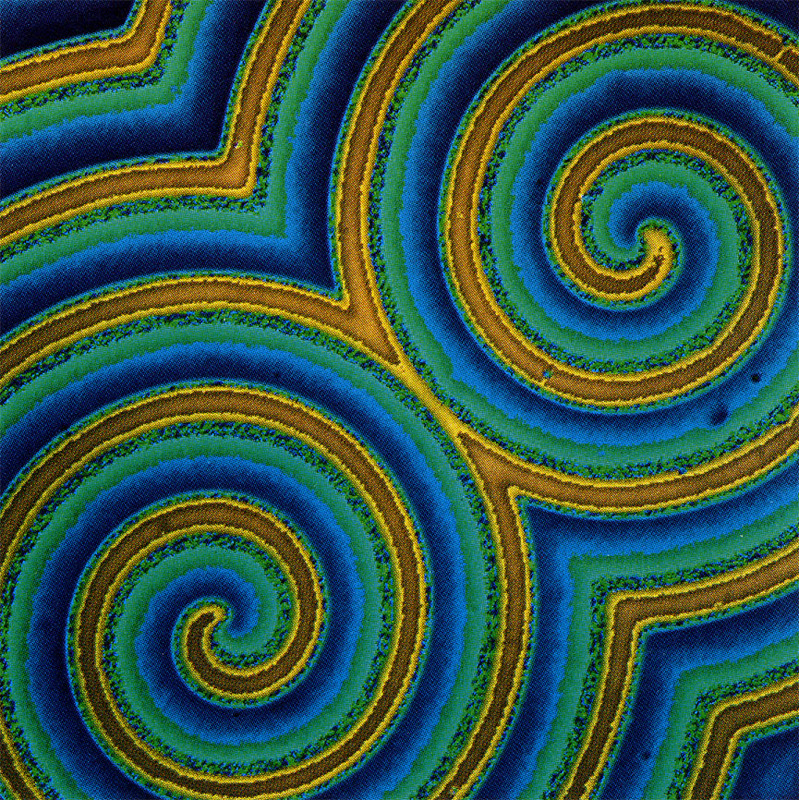C5 - Symmetric chemistry
Title
C5 - Symmetric chemistry
Description
Among the fascinating abundance of shapes in nature, the spiral stands out as a widespread structural element. Think of the form of snail—shells, of the order of sunflower kernels, of hurricane funnels or of distant galaxies. In aqueous solutions, chemical reactions may also develop spiral-shaped patterns, as the chemical waves in the Belousov—Zhabotinskii reaction show.
C3, with its relief structure is based on a chemical spiral which rotates around a center and at the same time expands two-dimensionally within a thin layer of solution. The distance between two wave-fronts is about 1 mm.
Precise measurement of the center of rotation - located at the inner side of the spiral tip (C4) - and analysis of lines of equal concentration (C5) reveal that the geometry of the wave develops according to the rules of an Archimedian spiral.
C3, with its relief structure is based on a chemical spiral which rotates around a center and at the same time expands two-dimensionally within a thin layer of solution. The distance between two wave-fronts is about 1 mm.
Precise measurement of the center of rotation - located at the inner side of the spiral tip (C4) - and analysis of lines of equal concentration (C5) reveal that the geometry of the wave develops according to the rules of an Archimedian spiral.
Subject
Pattern formation (Physical sciences); Physics; Visualization; Nonlinear Dynamics; Pattern Formation; Chemical Waves; Reaction Diffusion Systems; Nonlinear Waves; Traveling Waves; Chemical Oscillations; Oscillating chemical reactions;
Relation
C3 - The rotating chemical spiral
C4 - The spiral tip turning around the center
C4 - The spiral tip turning around the center
Creator
Müller, Stefan C.
Plesser, Theo
Source
Dynamic Pattern Formation in Chemistry and Mathematics: Aesthetics in the Sciences: Catalogue of an Exhibition
Contributor
Müller, Stefan C; Plesser, Theo; Hess, Benno; Max-Planck-Institut für Ernährungsphysiologie Dortmund, West-Germany;
Markus, Mario;
Markus, Mario;
Date
1988
Publisher
Laupenmühlen Druck, Bochum
Rights
Type
Still Image
Collection
Citation
Müller, Stefan C.
and Plesser, Theo
, “C5 - Symmetric chemistry,” History of the Belousov-Zhabotinsky Reaction, accessed April 19, 2024, https://woosterdigital.org/BZ-history/items/show/207.

